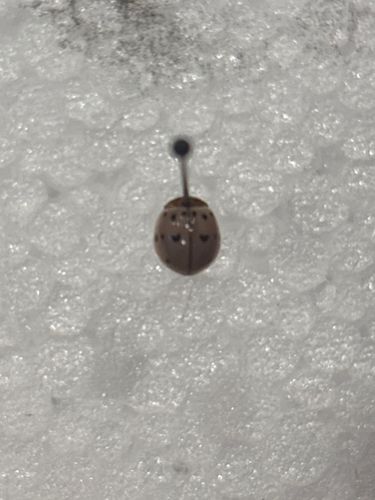Ladybug (specifically a Harlequin Ladybird or Asian Lady Beetle is indicated by the 'M' marking on the pronotum, though this image is blurry)
Scientific Name: Harmonia axyridis (likely, given markings)
Order & Family: Coleoptera, Coccinellidae
Size: 5-8 mm

Natural Habitat
Gardens, fields, agricultural areas, forests, urban environments; they often aggregate on buildings in colder months.
Diet & Feeding
Primarily predatory, feeding on aphids, scale insects, and other soft-bodied arthropods. Can also feed on pollen, nectar, and fruit when prey is scarce.
Behavior Patterns
Known for their voracious appetite for aphids. They undergo complete metamorphosis (egg, larva, pupa, adult). Adults often overwinter in large aggregations, seeking shelter in protected areas like inside homes or under bark.
Risks & Benefits
Benefits: Highly beneficial as biological control agents against agricultural pests like aphids. \nRisks: Can become a nuisance when they invade homes in large numbers in autumn. They can bite (though rarely painful) and exude a foul-smelling, yellowish fluid (reflex bleeding) that can stain surfaces. In some regions, they outcompete native ladybug species.
Identified on: 9/19/2025